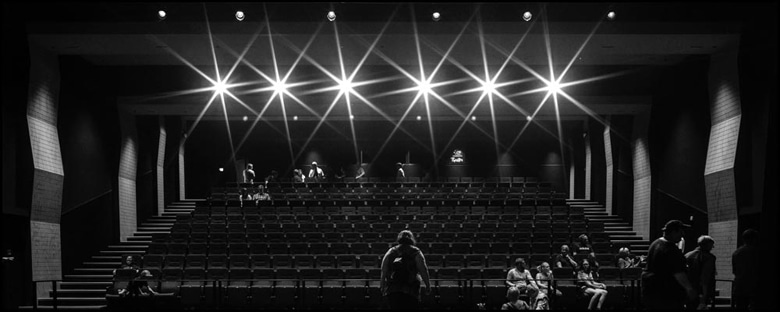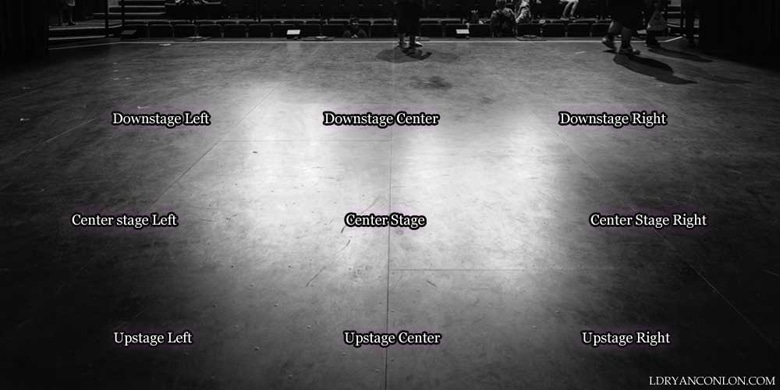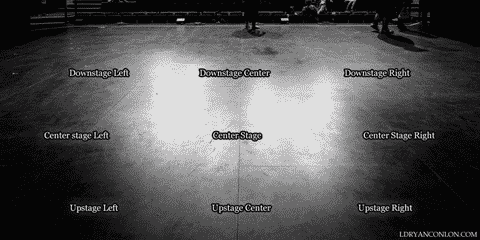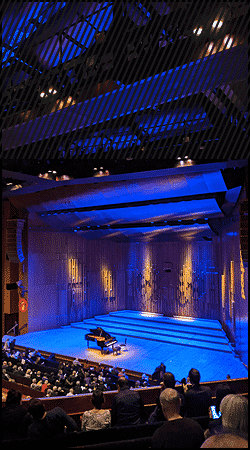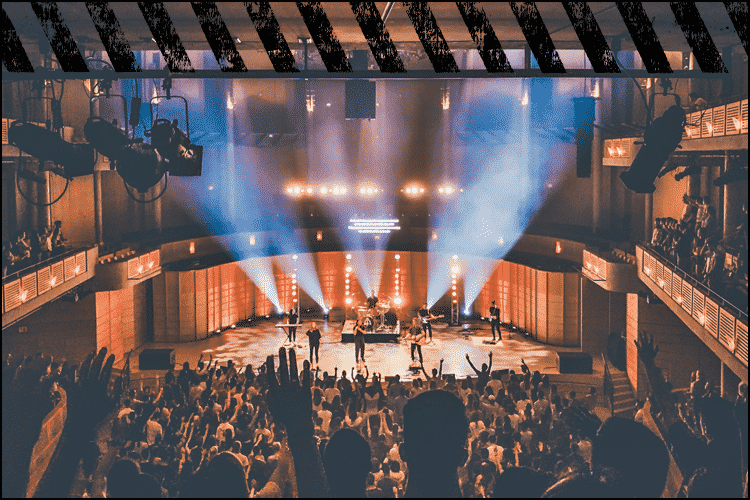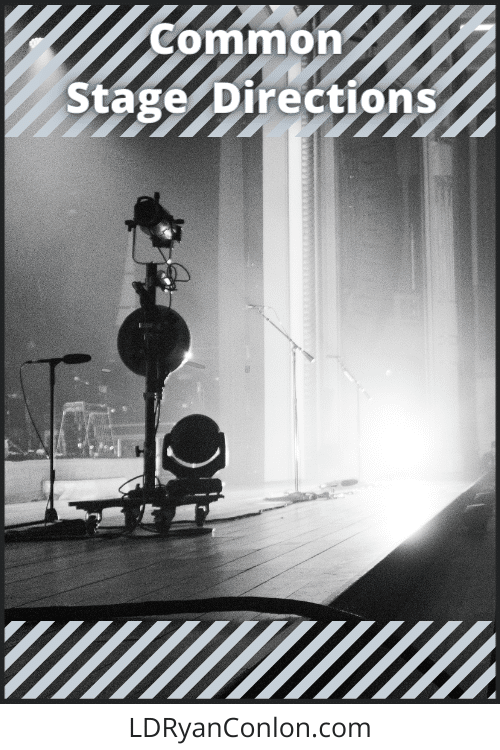Learning How to Use Stage Direction
Proper communication between the director, technical crew, and performers is absolutely necessary for things to go smoothly during a live event or theatrical performance. Knowledge of the nine stage directions will allow you to communicate effectively and reduce the stress and anxiety of not understanding one another. What are stage directions? There are nine common stage directions that you should learn. Memorizing the different areas of the stage will help you communicate effectively with everyone involved and pull off the best performance possible. If you are passionate about communicating properly during a performance, continue reading to learn the nine basic stage directions and how to effectively communicate with the visionaries of the performances that you are working on perfecting.
The Main Purpose of Stage Directions
Why do we need stage directions? Scriptwriters use stage directions in scripts to instruct the performers as to how they are to enter the stage, where they should go once they are on the stage, and many other directions. Stage directions are also used between directors and the technical crew operating the video, sound and lighting systems. When following stage directions, consider them as if you are looking at the audience. If you are a performer, part of the technical crew, or just helping out on stage, it is important to know the basic stage directions. You need to know the difference between stage right and stage left. If you are meeting with a producer to discuss lighting; or are a performer running through the script, you must be current on the jargon used to describe staging. Performers are not the only people who need to know and understand basic stage directions. When setting up for a performance or an event, everyone must be on the same page, technically speaking. Producers, sound, and lighting technicians need to be able to communicate clearly for the best possible outcome. This is true for theater as well as corporate events. Basically anything with a stage and audience will use stage directions.
The 9 Common Stage Directions
Look at these directions as though you are the performer on stage, facing the audience. Below are the nine basic stage directions:
- Downstage Left
- Downstage Center
- Downstage Left
- Center Stage Right
- Center Stage
- Center Stage Left
- Upstage Left
- Upstage Center
- Upstage Right
The main sections of the stage include:
- Downstage – The portion of the stage that is the closest to the audience.
- Center stage – The center of the stage.
- Upstage – The part of the stage farthest away from the audience.
Each main section has three sub-sections:
- Left
- Center
- Right
What’s in a Name?
The terms downstage and upstage date back to the Shakespearian era when a stage was created at a slant toward the audience for better viewing; in those times, most audiences were sitting or standing on flat ground. So the back of the stage was raised for a better viewing angle. This ended up being called upstage.
Stage Directions in Action
- Spot Guitar Player Stage Right
- Place the podium downstage left
- Now move the podium onstage 2 inches
- Move the podium upstage 3 inches
- Turn the podium onstage by 2 inches
- Strike the podium – put it backstage
- The Lighting Designer is out at Front of House
- The MC will enter stage left
- The person receiving the award is at a table House Right
Frequently Asked Questions
What part of the stage is closest to the audience? The Downstage Edge of the stage is the closest to the audience.
Don’t Panic – Practice Makes Perfect
You just landed your first real part in a major performance, and you will be playing one of the lead characters. The director gives you the script and advises that you go home and get started memorizing your lines. Once you get home and settled, you open the script. Lines and lines of ‘Lines’ are staring back at you with little italic abbreviations all over the page. Your eyes begin to cross, and you begin to get nervous. If you are looking for great book to help you learn more – Check out >> The Assistant Lighting Designer’s Toolkit If you are a performer reading a script, you may see the following abbreviations; familiarizing yourself with them will help you greatly in the long-run:
- C: Center
- D: Downstage
- DC: Downstage Center
- DL: Downstage Left
- DLC: Downstage Left-Center
- DR: Downstage Right
- DRC: Downstage Right-Center
- L: Left
- LC: Left Center
- R: Right
- RC: Right Center
- U: Upstage
- UL: Upstage Left
- ULC: Upstage Left-Center
- UR: Upstage Right
- URC: Upstage Right-Center
Additional directions that may be helpful:
- FOH (front of the house) – FOH refers to the areas open to the public, anywhere in front of the stage. This includes where the audience sits.
- BOH (back of the house) – Backstage is located behind the stage. It refers to the areas where the performers, directors, production crew, and staff get prepared for the upcoming show.
- House left – Left from the audiences’ perspective
- House Right – Right from the audiences’ perspective
- Onstage: The portion of the stage visible to the audience. On the Stage.
- Offstage: The area surrounding the stage not visible to the audience. Off the Stage.
These directions are not only for telling the performer when and where to move. Basic stage directions can instruct the performer on:
- How quickly to move
- Style of language/level of voice
- Type of movements to make
- Which mood/emotions to portray
Read Between the Lines – Don’t be too Literal
Directions are used in scripts merely to suggest what the writer would like to see happen. Don’t get too caught up in executing the instructions exactly as they are written. Sometimes once you actually get up on stage, certain directions need to be modified to allow the performance to transition more fluidly. This is where knowing your stage directions will really become important. The director can make changes on the fly, and you (the performer) will be able to follow along without having the ‘deer in the headlight’ expression on your face because you are unsure of where to go.
Learning Stage Directions is Child’s Play
Since approximately 80% of people learn by actually participating in a particular activity, many performing arts teachers use fun games to help their students memorize stage directions helping them quickly move from one area to another without having to stop and think about it. Some of the games teachers have created to help children learn stage directions and how to respond to them are listed below:
- Minefield – This unique game requires the other actors to guide a blindfolded actor to a specific area of the stage while avoiding “mines” (items that have been scattered).
- Trapdoor – To play this game, the director tells all performers to gather at a specific place on the stage. The director will call out a stage direction, and anyone who initially goes the wrong direction is eliminated from gameplay. The last performer remaining in play gets to exit via the stage’s trap door.
- Simon Says – Stage Direction – This is a variation of traditional Simon Says. “Simon” calls out a stage direction, and the performers go to that location. If a performer moves when “Simon” calls out a direction without saying “Simon – or Director – says,” the performer is eliminated.
These games work by sectioning off the different areas with tape or by providing signs marking the various sections of the stage/theater. As a performer, not only do you get to work on your improv skills, but you will have fun while learning how to respond to any given stage direction. While these activities and games are originally intended for younger children, they are actually a great tool for people of any age. These games can be adapted for older students who are new to the stage and are having a difficult time memorizing the directions.
The Success of Having Technical Knowledge
Whether you are a lighting technician or a Stagehand helping out on stage, it is important to know the basic stage direction. When you meet with a client to discuss lighting and what part of the stage they want to highlight, you must be current in the terminology. When setting up for an event, everyone must be on the same page, technically speaking. Stagehands and lighting technicians need to be able to communicate clearly for the best possible outcome. Knowing the proper stage direction terms saves time, frustration, and embarrassment. You don’t want to be in the middle of a major theatrical production only to be spotlighting the wrong part of the stage due to miscommunication. Poor Juliet would be in the dark while a random bush is taking center stage; better yet, if you are Juliet, you don’t want to be on the ground when you are supposed to be on the balcony. Knowing how to follow state directions properly will save time, frustration, and embarrassment. Using the proper terms will take time. But try to not say “very front of stage” instead say “Downstage edge” Story – I was working with a person for the first time. I did not know if they had any experience with lighting. I gave that person a simple job – Put that light on that truss. They responded “On the downstage or Upstage side of the truss?” after hearing that I knew this person has done this type of work before.
Knowing Where to Go Saves the Show
If you have a passion for the performing arts, the tips in this article will get you started on your path to a fun and always changing career. Mastering the stage directions will allow you to command the stage and win the audience over with a seamless production.
Read More
Pins for Pinterest If you like what we see feel free to share some love on Pinterest <3

Ryan Conlon is a highly experienced Corporate Freelance Lighting Designer with two decades of dedicated work in the entertainment industry. With a passion for creating captivating lighting experiences, Ryan has contributed his expertise to numerous corporate meetings, stage productions, concerts, and events throughout his career.

